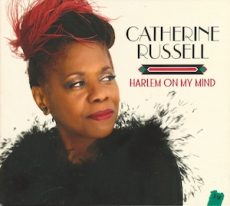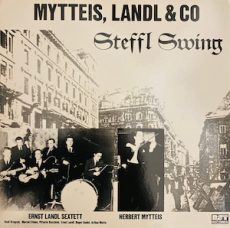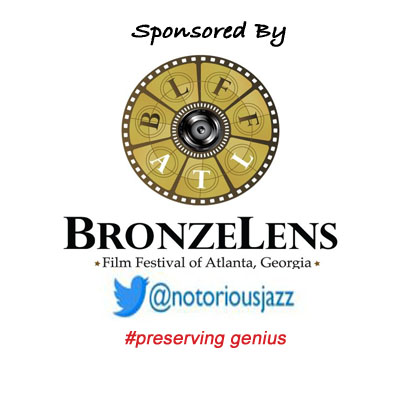
Daily Dose Of Jazz…
John “Bugs” Hamilton was born on March 8, 1911 in St. Louis, Missouri.
Leaving home for New York City in 1930 he was a member of trombonist Billy Kato band and played with Chick Webb around the same time for about a year.. Toward the middle of the decade he played with Kaiser Marshall, then joined Fats Waller’s ensemble in 1938. Bugs remained with Waller until 1942, touring, recording and often appearing in several films as a member of Waller’s group.
During World War II he played with Eddie South and Roy Eldridge. Shortly after the end of the war, trumpeter John Hamilton contracted tuberculosis, resulting in his death at age 36 on August 15, 1947 in St. Louis.
More Posts: history,instrumental,jazz,music,trumpet

Daily Dose Of Jazz…
George Holmes “Buddy” Tate was born on February 22, 1913 in Sherman, Texas and first played the alto saxophone. He began performing in public as early as 1925 in a band called McCloud’s Night Owls, then later in the decade was playing tenor saxophone around the Southwest with bands led by Terrence Holder, Andy Kirk and Nat Towles.
He joined Count Basie in 1939 replacing Herschel Evans and stayed with him until 1948. After his period with Basie ended, he worked with several other bands before finding success on his own, starting in 1953 in Harlem. Buddy’s group worked at the Celebrity Club from 1953 to 1974. In the late 1970s, he co-led a band with Paul Quinichette and worked with Benny Goodman.
In 1979, Tate’s hometown invited him to play a concert at Austin College’s Sid Richardson Center as part of The Sherman Symphony Pops Series. Mayor Virginia Morriss issued a proclamation declaring October 6th as Buddy Tate Day. Accompanying Tate were Jay McShann, Claude Williams, Buster Smith and Paul Gunther.
In 1980, he was injured by scalding water in a hotel shower, which kept him inactive for four months. The 1990s saw him slow down, but he remained active playing with Lionel Hampton among others.
In 1992, Tate took part in the documentary, Texas Tenor: The Illinois Jacquet Story. In 1996, he recorded with reeds player James Carter on the younger man’s second release for Atlantic Records, Conversin’ with the Elders, along with trumpeters Harry “Sweets” Edison and Lester Bowie, and saxophonists Hamiet Bluiett and Larry Smith.
Living in New York until 2001, he moved to Phoenix, Arizona to be cared for by his daughter. Saxophonist and clarinetist Buddy Tate died in Chandler, Arizona twelve days before his 88th birthday on February 10, 2001.
More Posts: clarinet,history,instrumental,jazz,music,saxophone

Daily Dose Of Jazz…
Fred Staton was born on Valentine’s Day, February 14, 1915 in Pittsburgh, Pennsylvania. His musical life began with his mother’s player piano and 78 records of Duke Ellington and Fletcher Henderson. He began singing in his church’s gospel choir, but got introduced to playing jazz when the group’s sponsor brought in a full band’s worth of equipment, complete with charts of popular music. He first picked up the drums but having to pack up his kit left few women to flirt with as his bandmates left after the gig. This and the influence of a Johnny Hodges cut on an Ellington big band record inspired him to choose the saxophone.
He played in the first ensemble Art Blakey ever formed, alongside pianist Erroll Garner. The lack of opportunity and venues for a young black man in segregated Pittsburgh led Staton to leave the Steel City and find his fortune gigging on the East Coast. He fell in with Horace Silver and watched fellow Westinghouse High School graduates Billy Strayhorn and Ahmad Jamal pen iconic compositions.
Staton went on to become a veteran member of the Harlem Blues & Jazz Band, and toured Europe, Russia and the United States to much acclaim. He has received numerous honors and awards, and was a lifetime member and supporter of WBGO Radio. Tenor saxophonist Fred Staton continued to play jazz until his death at 102 years of age on October 25, 2017.
More Posts: history,instrumental,jazz,music,saxophone

Daily Dose Of Jazz…
Ernst “Nesti” Landl was born February 12, 1914 in Vienna, Austria. He studied at the New Vienna Conservatory in the 1930s and soon made a name for himself on the Viennese music scene.
In Vienna he accompanied the singer Adelaide Hall and was soon active as a musician in North Africa and Portugal. From 1943 he played in the Steffl Diele with Italian singer and guitarist Vittorio Ducchini, violinist Herbert Mytteis and French drummer Arthur Motta. Due to the audience response, recordings were made for Odeon, but due to the ” jazz focus ” there were initially almost no releases.
After the defeat of National Socialism he played in the Vienna Dance Orchestra and also founded the Hot Club Vienna as a studio band to record jazz songs for Elite Special with musicians such as Hans Koller and Viktor Plasil. Until 1958 Landl performed in Vienna mainly as a bar pianist . He then moved to Stockholm, Sweden where he worked until his death.
Pianist, bassist and drummer Ernst Landl died on December 4, 1983 in Stockholm.
More Posts: bandleader,bass,drums,history,instrumental,jazz,music,piano

Daily Dose Of Jazz…
Niels Hartvig Foss was born on January 28, 1916 in Copenhagen, Denmark. He began playing guitar and from 1933 to 1934 began performing with the Svend Asmussen Group. He went on to play bass with Asmussen and others.
From 1940 to 1948 Niels led and played trombone in orxhestras and bands he formed. In 1949 for the next two years he performed with Peter Rasmussen and in 1957 moved to Switzerland where he continued to play part-time.
Over the course of his career Foss was a member of All Danish Starband, Etly Lizette And Her Orchestra, Kai Ewans Og Hans Orkester, Kaj Timmermann’s Septet, The Kordt Sisters Med Swingtet, and The Swingin’ Birds. He recorded for Odeon, His Master’s Voice, Imperial record labels.
Bassist, trombonist and guitarist Niels Foss died on May 16, 2018.
More Posts: bass,guitar,history,instrumental,jazz,music,trombone




